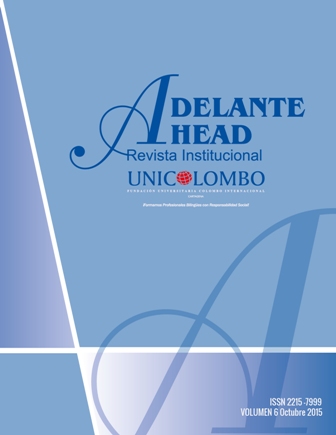Effect of the interaction patterns in the language classroom
Resumen
This paper intends to analyze the student's patterns of interaction in a private institution in Cartagena de Indias; the data was collected through classroom observation and analyzed using the FLINT system and a set of principles of instructed language learning. The results show that 67% of the interventions were done by students under the category of peer interaction, which means students asking questions or answering to peers and 33% were interventions done by the teacher mainly focused on giving directions; regarding Ellis principles, opportunities for output was the most significant finding in the study. It can be observed the most evident patterns preferred by students in social interaction and the importance of teacher scaffolding in the mediation process.
KEY WORDS:
interaction patterns, ZPD, mediation process, scaffolding
Citas
Brown, H. (2001). Teaching by principles: an interactive approach to language pedagogy. Nueva York, NY: Pearson.
Brown, H. (2007). Teaching by principles: an interactive approach to language pedagogy. Nueva York, NY: Pearson.
Ellis, R. (2005). Principles of instructed language learning. S Y S T E M , 3 3 ( 2 ) , 2 0 9 - 2 2 4 . doi:10.1016/j.system.2004.12.006
Gonzalez, B. & Leon, A. (2009). Interacción verbal u socialización cognitiva en el aula. Acción Pedagógica, 18, 30-41.
Khatib, M. (2011). Contributions of Vygotsky's theory to second language acquisition. European Journal of Scientific Research. 58(1), 44-55. Retrieved from: http://www.eurojournals.com/ejsr.htm
Mercer, N. (2001). Palabras y Mentes. Cómo usamos el lenguaje para pensar juntos. Barcelona, España: Paidós.
Moskowitz, G. (1971). Interaction analysis: A new modern language for supervisors. Foreign Language Annuals, 5, 211-221.
Moussa, L. (2009). An investigation of social interaction in second language learning process: An alternate approach to second language pedagogy in Greece. PLTDP, 10, 1-14.
Rivers, W. (1987). Interactive language teaching. New York: Cambridge University Press.
Van Lier, L. (1996). Interaction in the language curriculum awareness, autonomy and authenticity. Londres, Inglaterra; Nueva York, NY: Longman.
Vygotsky, L. (1978). Mind in society: The development of higher psychological processes. Cambridge, Massachusetts: Harvard University Press.
Ziglari, L. (2008). The role of interaction in L2 acquisition: An emergentist perspective. European Journal of Scientific Research. 23(3), 446-453. Retrieved from: http://www.eurojournals.com/ejsr.htm
Moskowitz, G. (1971). Interaction analysis: A new modern language for supervisors. Foreign Language Annuals, 5, 211-221.
Rivers, W.(1987). Interactive language teaching. Nueva York, NY: Cambridge University Press.
Van Lier, L.(1996). Interaction in the language curriculum: awareness, autonomy and authenticity. Londres, Inglaterra; New York, NY: Longman.
Vygotsky, L. (1978). Mind in society: The development of higher psychological processes. Cambridge: Harvard University Press.
Ziglari, L.(2008). The role of interaction in L2 acquisition: An emergentist perspective. European Journal of Scientific Research. 23(3), 446-453. Rescatado de: http://www.eurojournals.com/ejsr.htm.




